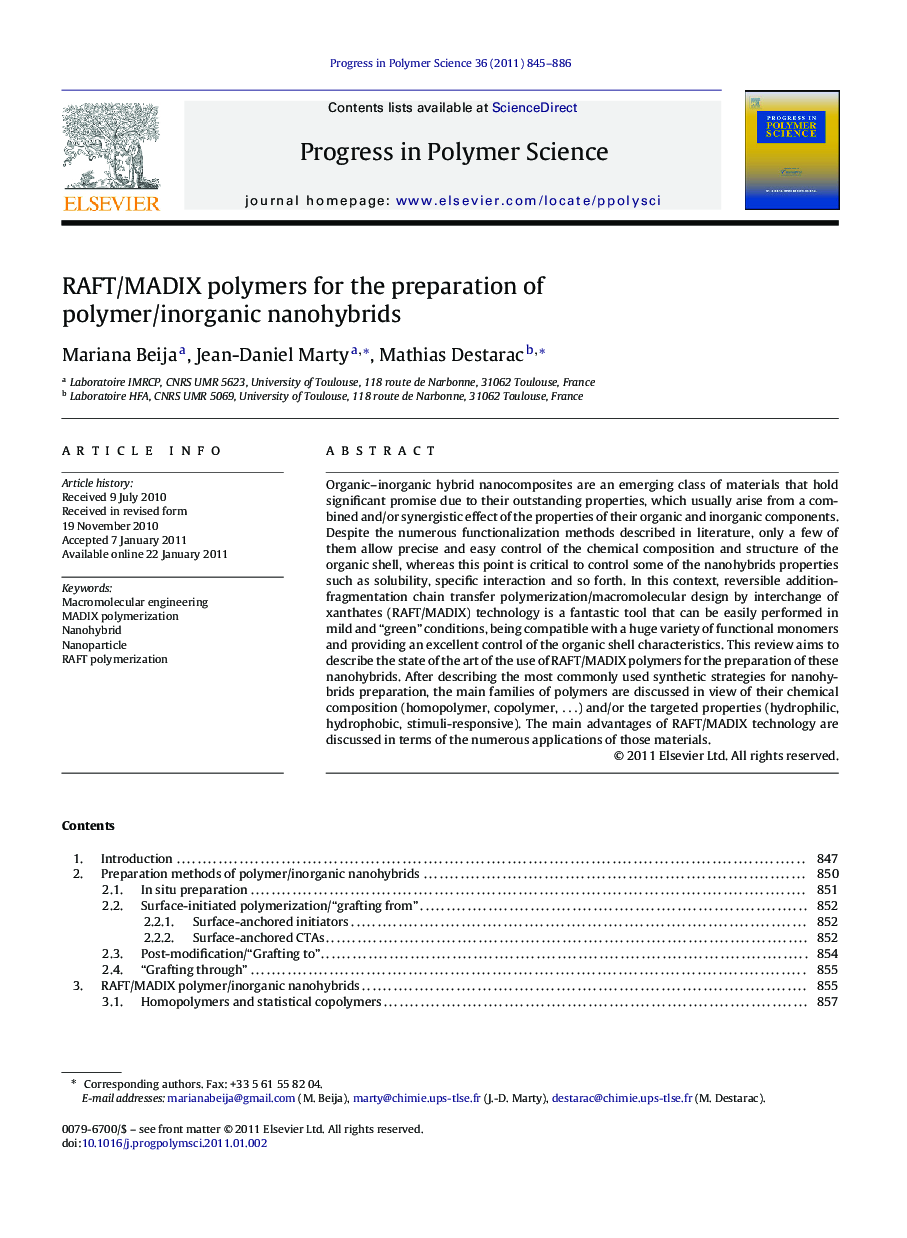| Article ID | Journal | Published Year | Pages | File Type |
|---|---|---|---|---|
| 5208506 | Progress in Polymer Science | 2011 | 42 Pages |
Abstract
Organic-inorganic hybrid nanocomposites are an emerging class of materials that hold significant promise due to their outstanding properties, which usually arise from a combined and/or synergistic effect of the properties of their organic and inorganic components. Despite the numerous functionalization methods described in literature, only a few of them allow precise and easy control of the chemical composition and structure of the organic shell, whereas this point is critical to control some of the nanohybrids properties such as solubility, specific interaction and so forth. In this context, reversible addition-fragmentation chain transfer polymerization/macromolecular design by interchange of xanthates (RAFT/MADIX) technology is a fantastic tool that can be easily performed in mild and “green” conditions, being compatible with a huge variety of functional monomers and providing an excellent control of the organic shell characteristics. This review aims to describe the state of the art of the use of RAFT/MADIX polymers for the preparation of these nanohybrids. After describing the most commonly used synthetic strategies for nanohybrids preparation, the main families of polymers are discussed in view of their chemical composition (homopolymer, copolymer, â¦) and/or the targeted properties (hydrophilic, hydrophobic, stimuli-responsive). The main advantages of RAFT/MADIX technology are discussed in terms of the numerous applications of those materials.
Related Topics
Physical Sciences and Engineering
Chemistry
Organic Chemistry
Authors
Mariana Beija, Jean-Daniel Marty, Mathias Destarac,
